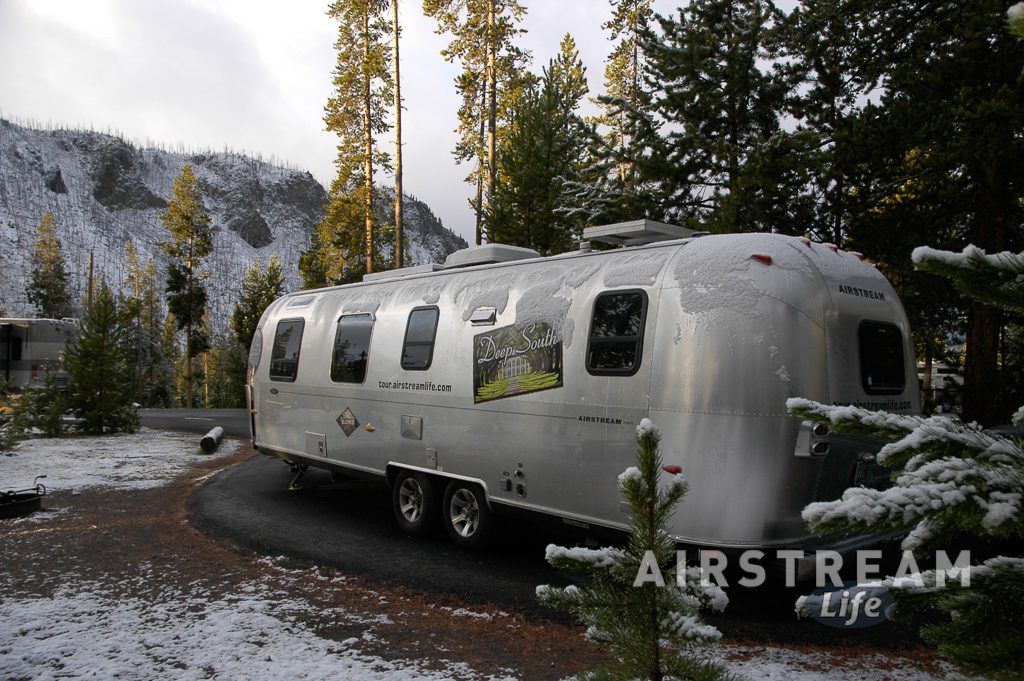Propane gas scares people. It seems to be one of those very common things like snakes, caves, heights, and needles that just freaks people out—but in the case of gas, I suppose there’s a more rational reason to be concerned. A bit of a gas leak can turn into a big BOOM.
I once calculated that there was enough compressed liquid propane in one 30-pound tank to blow up an entire house. (If you’re morbidly interested in how this is possible, see page 189 of “The (Nearly) Complete Guide to Airstream Maintenance” for details.) Reading that fact is probably not helping your fear of propane gas, if you have one, but I include it for the over-confident types who don’t have a healthy respect for the power of this stuff.
Ideally, you’re somewhere between irrational fear and complete nonchalance when it comes to dealing with propane gas in your Airstream. It’s still an excellent solution for energy-intensive jobs like heating water and warming the air in your Airstream, so we need it.* Let’s talk about how to handle it safely and avoid the boom.
First off, keep in mind that a lot of engineering work has been done to make propane gas incredibly safe. Your Airstream has many little safety mechanisms you may not know about.
- Everyone knows that propane gas has a distinctive smell. That’s usually the first and most obvious hint that a problem is brewing. But if you can’t or don’t smell it, your Airstream has a propane gas leak detector located down low, near the floor, which can’t be turned off. I talked about this detector and when to replace it in this video. It sniffs for gas all the time, even when the Battery Disconnect switch is set to Store.
- Most of the appliances that burn propane (water heater, furnace, refrigerator) will automatically turn off if they can’t light the gas. That’s to prevent unburnt gas from accumulating if there’s an ignition problem.
- Most of the brass connections (fittings) in the propane system are designed to self-seal (“flare fittings”) to keep gas from leaking. Also, all connections are routinely tested for leaks every time they are put together. You can use some soapy water to check for leaks, and it’s easy. (The procedure is explained toward the end of this video.)
- The propane tanks themselves have Over-Pressure Device (OPD) valves, which prevents them from being over-filled and will also stop the flow of gas if no hose is connected. This prevents the possibility of gas leaking out of a tank that is not being used.
Item #4 is the one that seems to cause the most confusion among people I talk to. Contrary to popular belief, the OPD valve doesn’t prevent gas from flowing when a tank is connected. So, if you’re driving down the road and have an accident which causes one of the gas lines to break open, or a rodent chews through the lines, the OPD won’t help you.
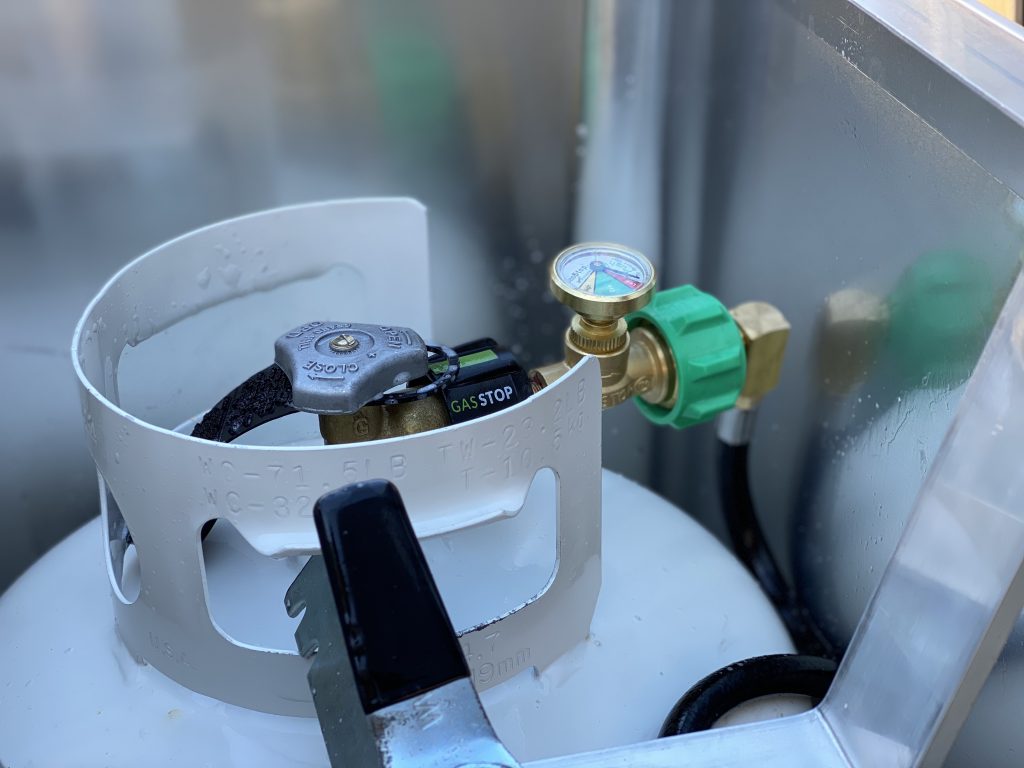 Of course, we’ll all supposed to shut off the gas at the tanks before traveling, but I know that most people don’t. If you don’t have a refrigerator that can run on 12 volts, and you can’t run the fridge on gas, you’re going to be looking at melted ice cream when you get to your destination.
Of course, we’ll all supposed to shut off the gas at the tanks before traveling, but I know that most people don’t. If you don’t have a refrigerator that can run on 12 volts, and you can’t run the fridge on gas, you’re going to be looking at melted ice cream when you get to your destination.
For this reason, we encourage people to get a GasStop for each of their propane tanks. It’s the only device on the market today that completely shuts off the gas if there’s a major leak. (A “major” leak is basically an open gas line. You still need to check that you’ve turned off the stove and oven before every trip.)
You can also learn some simple safety tips:
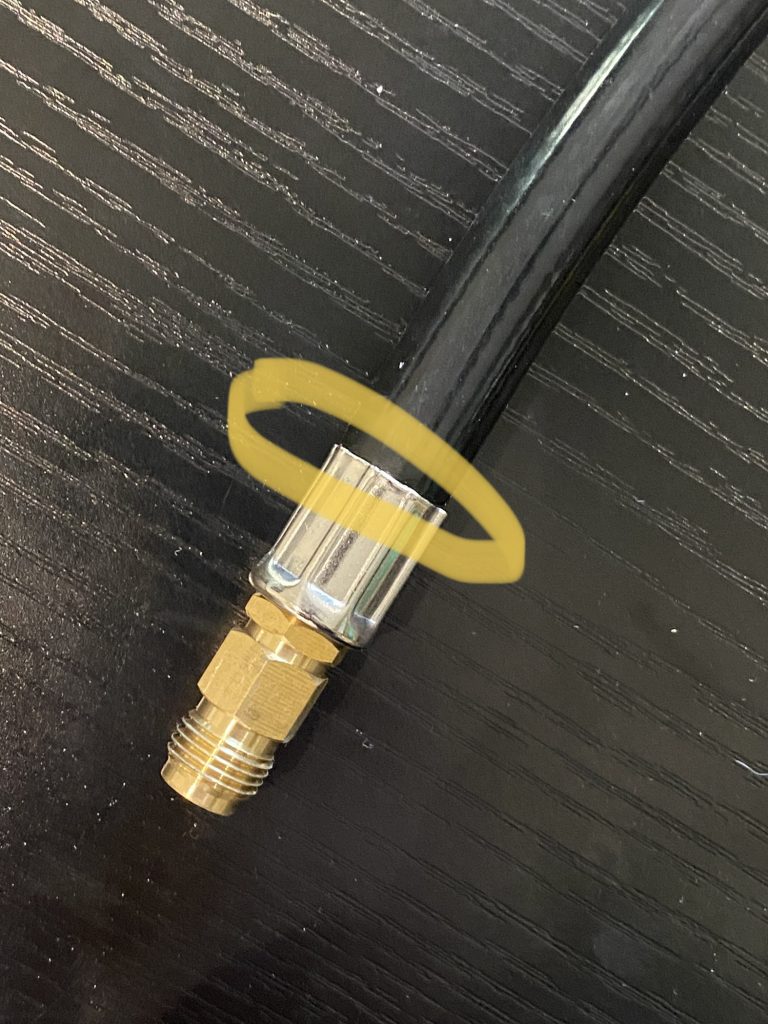 Sniff around. Do you smell propane gas inside the tank cover? It’s pretty common to have minor leaks in this area. Double-check that the big green knobs are fully tightened. If that’s not it, do a full soapy-water test on all the threaded brass connections to the regulator and also at the point where the propane hose has a crimped steel fitting (see yellow circle in the photo). If the hose has a leak at that crimped edge, replace the hose. You can’t repair it. We offer a Propane Maintenance Kit that has everything you need (except a wrench) to replace two hoses, with instructions.
Sniff around. Do you smell propane gas inside the tank cover? It’s pretty common to have minor leaks in this area. Double-check that the big green knobs are fully tightened. If that’s not it, do a full soapy-water test on all the threaded brass connections to the regulator and also at the point where the propane hose has a crimped steel fitting (see yellow circle in the photo). If the hose has a leak at that crimped edge, replace the hose. You can’t repair it. We offer a Propane Maintenance Kit that has everything you need (except a wrench) to replace two hoses, with instructions.- Inspect the hoses and replace them before they leak. Even if they pass the soapy water test, you should replace the hoses if they are beginning to show cracks in the rubber. I’ve seen many old propane hoses that are as stiff as concrete and showing surface cracking, and they’re just dangerous leaks getting ready to happen.
- Test for leaks anytime a propane connection is loosened. This includes connections to the water heater, furnace, stove, gas regulator or other appliances you may have installed like a catalytic heater. The only connection you don’t need to test with soapy water is the green knob. Just hand-tighten it until it stops.
- Use a Pre-Departure Checklist to help you remember to always check that the stove and oven are fully off before you leave your campsite. Do that even if you haven’t used the stove or oven, because sometimes the knobs get accidentally knocked on. It’s very disturbing to open your Airstream trailer door after towing and get a face full of gas. (Don’t ask me how I know.)
- If you ever smell gas and can’t find the source, turn off the propane at the tanks and don’t use it again until you’ve had a technician check it out. If you’re on the road and there’s no Airstream service center nearby, you can go to any competent RV service center since most RVs use all the same gas components. (But keep in mind that they can’t file a warranty claim, so if your rig is still under warranty be sure to call Airstream Service first for authorization and advice.)
- If you transport the propane tanks in your truck, always keep them upright so that the Over-Pressure Device (OPD) can work properly. Also, don’t leave propane tanks inside a car or truck. The OPD valve is designed to vent gas if the pressure gets too high, and this could happen in a hot car.
- Replace the Propane Leak Detector inside your Airstream after 7 years. Newer models have a built-in alarm to let you know when they have reached their expiration date, and Airstream also puts a small sticker above the detector to show when it was installed (but this sticker may have been removed since). If you’re not sure and your Airstream is more than 7 years old, play it safe and have a new Leak Detector installed.
- If you are manually lighting any appliance (stove, oven, or the pilot on a vintage refrigerator or water heater), follow the instructions exactly. You definitely want to avoid letting gas accumulate, so if it doesn’t light promptly, stop, ventilate, and re-read the instructions (or get help).
Propane really is quite safe in an RV—as long as you let the safety devices do their jobs, and take just a few simple precautions. Don’t fear it, respect it, and you’ll be fine.
*The day is coming when RVs won’t use propane. Advancements and price decreases of battery technology are making it possible to build all-electric RVs at a reasonable cost and weight. In the next few years you’ll start to see the option for all-electric more often.



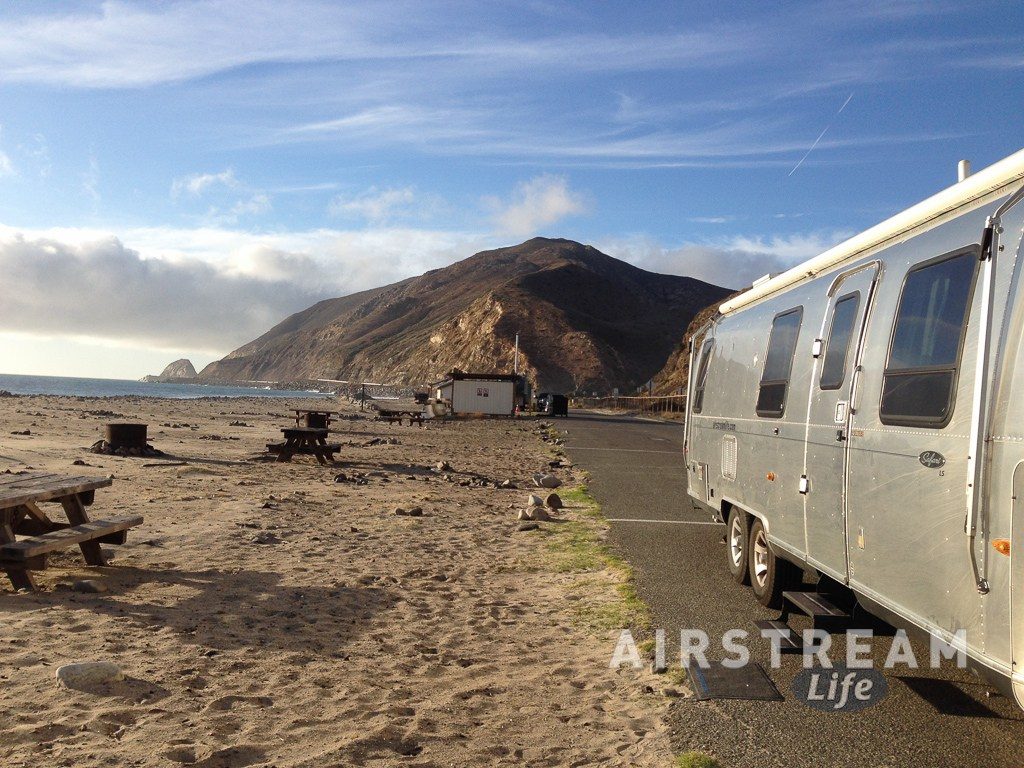
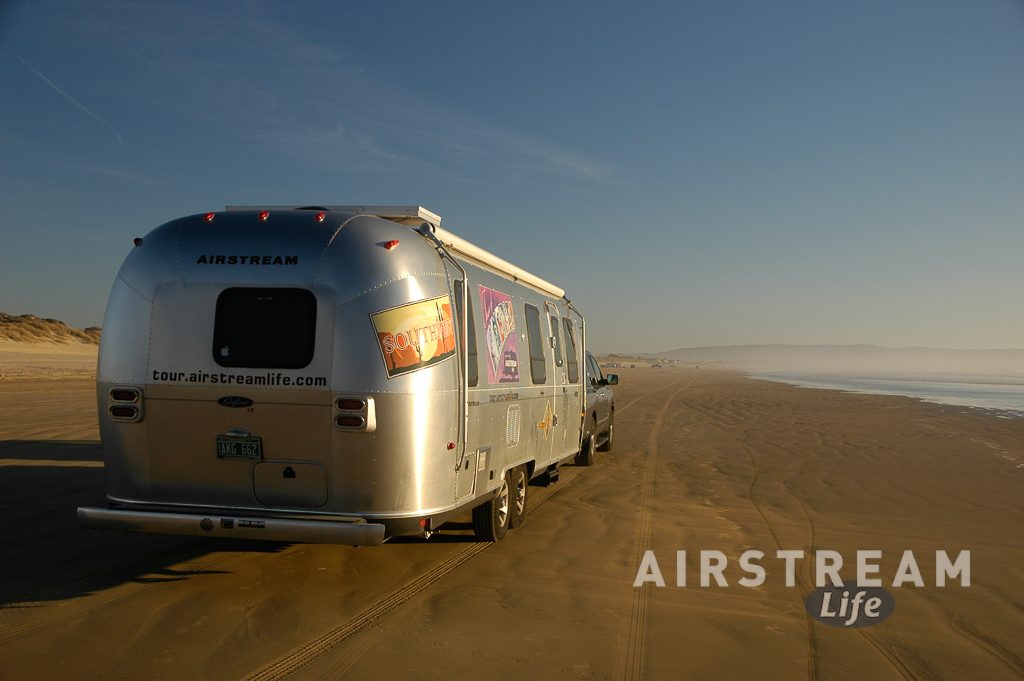

 Wally suggested a short trip down Baja California to Ensenada. He and his customer enjoyed that jaunt so much they talked about a more ambitious trip to Mexico City, each taking some more friends. That led to Wally organizing “The First Annual Inter-American Caravan Tour,” which ended up with 63 trailers (even though the caravan was supposed to be limited to 50). In turn that led to even bigger caravans into Central America and Canada, and eventually the formation of the Wally Byam Caravan Club and caravans around the world.
Wally suggested a short trip down Baja California to Ensenada. He and his customer enjoyed that jaunt so much they talked about a more ambitious trip to Mexico City, each taking some more friends. That led to Wally organizing “The First Annual Inter-American Caravan Tour,” which ended up with 63 trailers (even though the caravan was supposed to be limited to 50). In turn that led to even bigger caravans into Central America and Canada, and eventually the formation of the Wally Byam Caravan Club and caravans around the world.